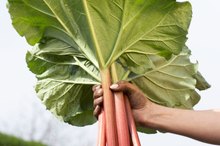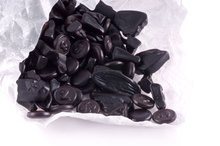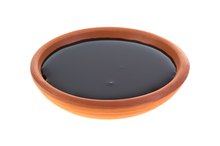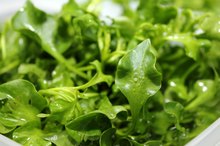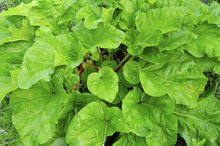What does fact checked mean?
At Healthfully, we strive to deliver objective content that is accurate and up-to-date. Our team periodically reviews articles in order to ensure content quality. The sources cited below consist of evidence from peer-reviewed journals, prominent medical organizations, academic associations, and government data.
The information contained on this site is for informational purposes only, and should not be used as a substitute for the advice of a professional health care provider. Please check with the appropriate physician regarding health questions and concerns. Although we strive to deliver accurate and up-to-date information, no guarantee to that effect is made.
When Can Babies Have Rhubarb?
Babies younger than 4 to 6 months do not need and should not have any type of solid food, MayoClinic.com states 2. Rhubarb, a vegetable, contains high amounts of oxalic acid, which can be toxic in high doses. The leaves contain the highest amount of oxalic acid and should not be eaten; the stalks contain less, but certain growing conditions can affect the plant, causing the oxalic acid content in the stalks to increase to dangerous levels.
Dangers
If rhubarb undergoes a hard freeze, some of the oxalic acid might move from the leaves into the stalk, Iowa State University Food Safety News reported in April 2007 1. If this happens, do not feed your baby or anyone else the rhubarb stalks. If you don't know if the plant has undergone a hard freeze, don't serve the stalks to your baby. Never give your baby the rhubarb leaves, which contain the highest amount of oxalic acid. In very high doses, eating rhubarb leaves could be fatal.
- If rhubarb undergoes a hard freeze, some of the oxalic acid might move from the leaves into the stalk, Iowa State University Food Safety News reported in April 2007 1.
- Never give your baby the rhubarb leaves, which contain the highest amount of oxalic acid.
Other Drawbacks
Can You Eat Rhubarb Leaves?
Learn More
The stems and roots of rhubarb contain anthraquinones, laxative substances that can cause diarrhea. If you feed rhubarb to your baby, watch for signs of loose stools. Severe diarrhea can cause dehydration in infants. Oxalic acid could also bind to calcium and reduce calcium absorption, although this seems unlikely, according to NYU Langone Medical Center. The oxalic acid in rhubarb could increase the risk of developing kidney stones.
- The stems and roots of rhubarb contain anthraquinones, laxative substances that can cause diarrhea.
Food Value
Rhubarb is low in calories and fiber, despite its stringiness, according to the University of Illinois Extension 1. Rhubarb also has a bitter taste that your baby might not appreciate. You would probably need to add sugar to rhubarb to make it palatable for a baby -- or anyone else. Sugar supplies empty calories that add nothing to an infant's nutrition.
- Rhubarb is low in calories and fiber, despite its stringiness, according to the University of Illinois Extension 1.
Considerations
Weight Loss With Rhubarb
Learn More
Rhubarb could have serious side effects under certain conditions. As long as you take safety precautions, your baby can eat rhubarb once he starts eating solid foods, if you can get him to eat it without adding a lot of sugar. Because of the bitter taste, you might prefer to serve other foods to get your baby used to eating solid foods before giving rhubarb.
- Rhubarb could have serious side effects under certain conditions.
- Because of the bitter taste, you might prefer to serve other foods to get your baby used to eating solid foods before giving rhubarb.
Related Articles
References
- University of Illinois Extension: Rhubarb
- MayoClinic.com; Solid Foods: How to Get Your Baby Started; June 2011
- Rhubarb, raw. FoodData Central. U.S. Department of Agriculture. Published April 1, 2019.
- Kaczmarczyk MM, Miller MJ, Freund GG. The health benefits of dietary fiber: Beyond the usual suspects of type 2 diabetes mellitus, cardiovascular disease and colon cancer. Metabolism. 2012;61(8):1058–1066. doi:10.1016/j.metabol.2012.01.017
- Yang J, Wang HP, Zhou L, Xu CF. Effect of dietary fiber on constipation: A meta analysis. World J Gastroenterol. 2012;18(48):7378–7383. doi:10.3748/wjg.v18.i48.7378
- Kunzmann AT, Coleman HG, Huang WY, Kitahara CM, Cantwell MM, Berndt SI. Dietary fiber intake and risk of colorectal cancer and incident and recurrent adenoma in the prostate, lung, colorectal, and ovarian cancer screening trial. Am J Clin Nutr. 2015;102(4):881–890. doi:10.3945/ajcn.115.113282
- Lattimer JM, Haub MD. Effects of dietary fiber and its components on metabolic health. Nutrients. 2010;2(12):1266–1289. doi:10.3390/nu2121266
- Evert AB, Boucher JL, Cypress M, et al. Nutrition therapy recommendations for the management of adults with diabetes. Diabetes Care. 2014;37 Suppl 1:S120-43. doi:10.2337/dc14-S120
- Vitamin K. Fact Sheet for Consumers. National Institutes of Health Office of Dietary Supplements. Updated: February 24, 2020
- Rhubarb. Memorial Sloan Kettering Cancer Center. About Herbs, Botanicals & Other Products. Updated February 15, 2019
- Rhubarb. Natural Medicine Database. Therapeutic Research Center. Updated 12/18/2019
Writer Bio
A registered nurse with more than 25 years of experience in oncology, labor/delivery, neonatal intensive care, infertility and ophthalmology, Sharon Perkins has also coauthored and edited numerous health books for the Wiley "Dummies" series. Perkins also has extensive experience working in home health with medically fragile pediatric patients.

